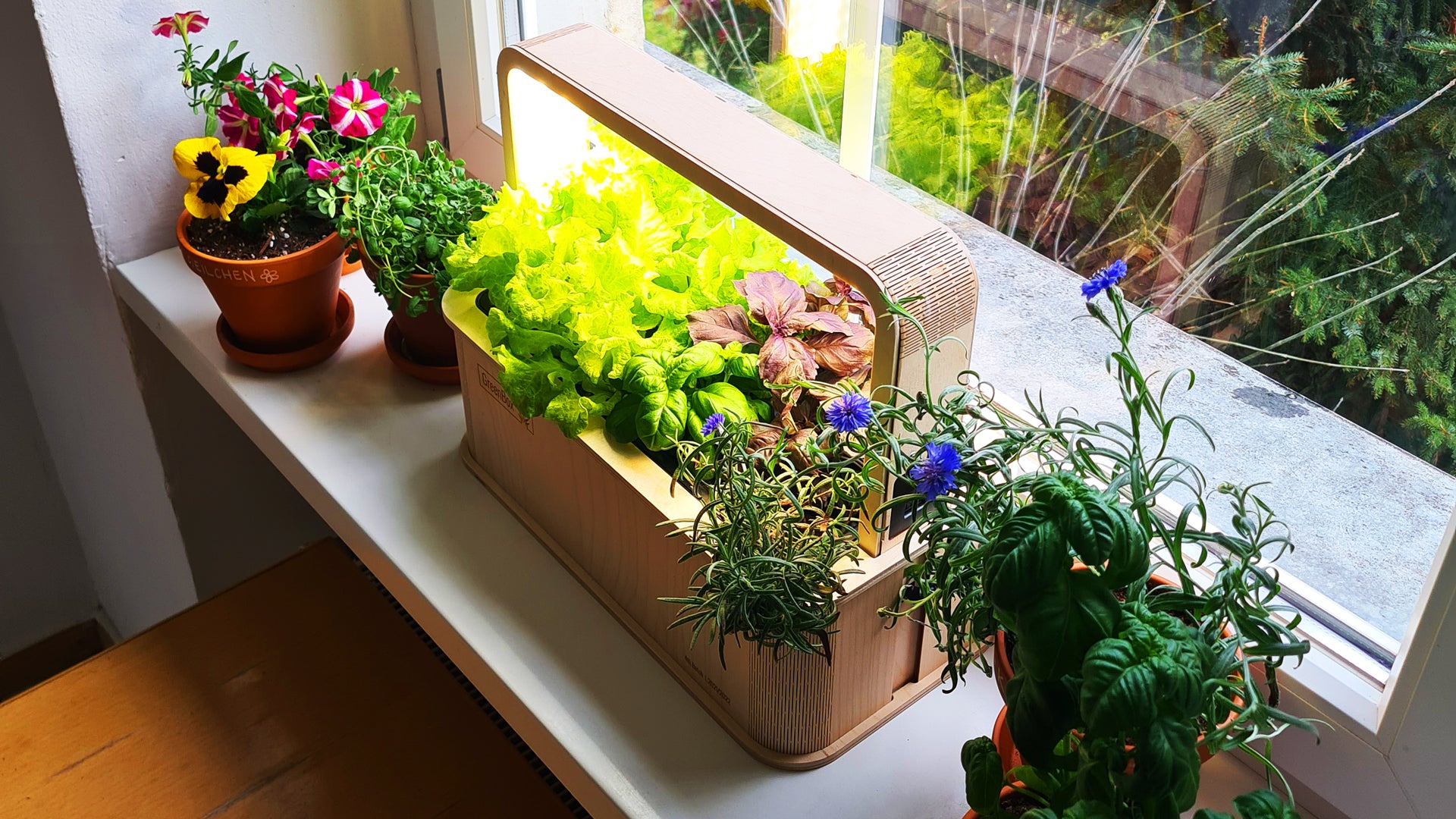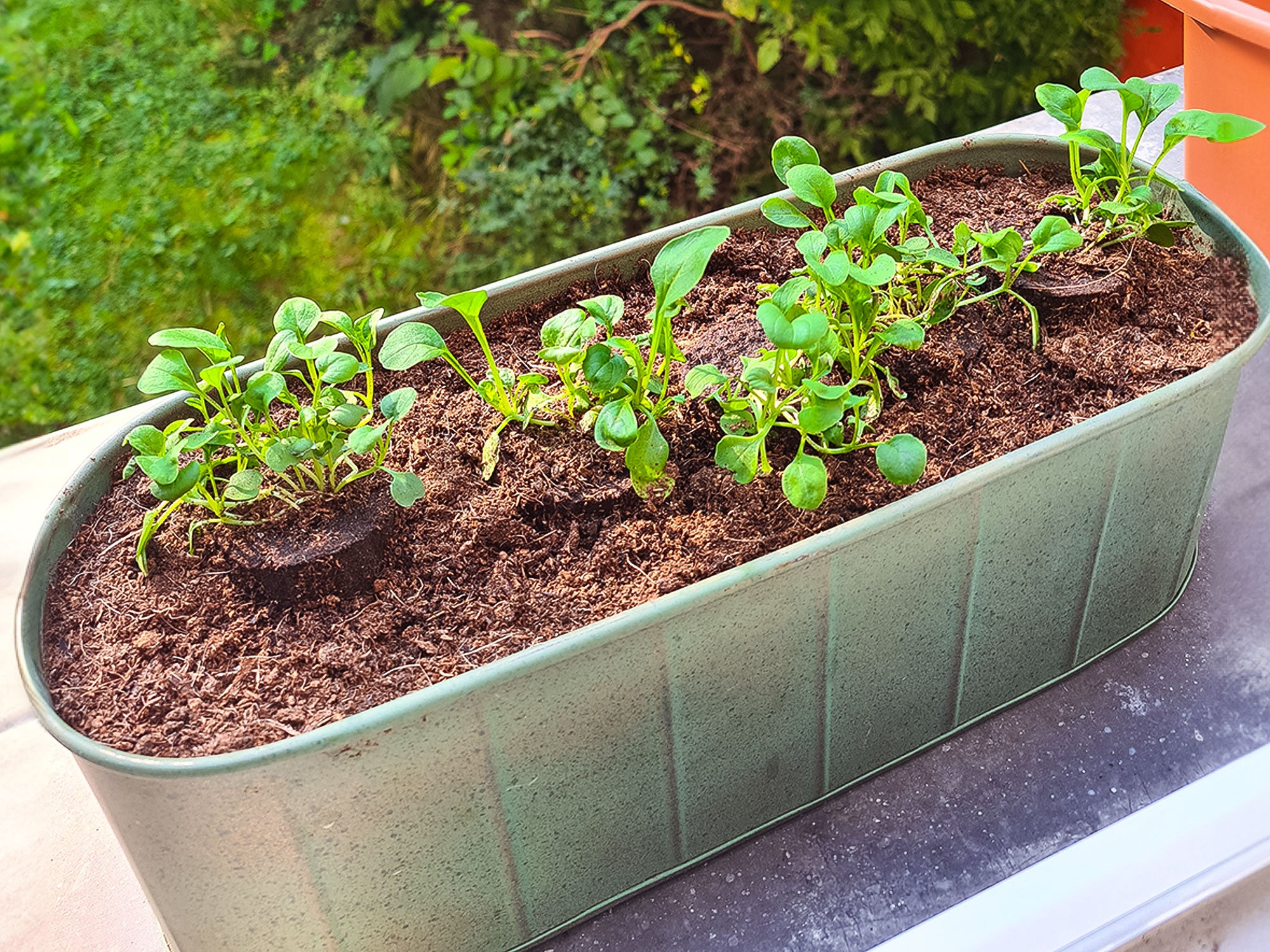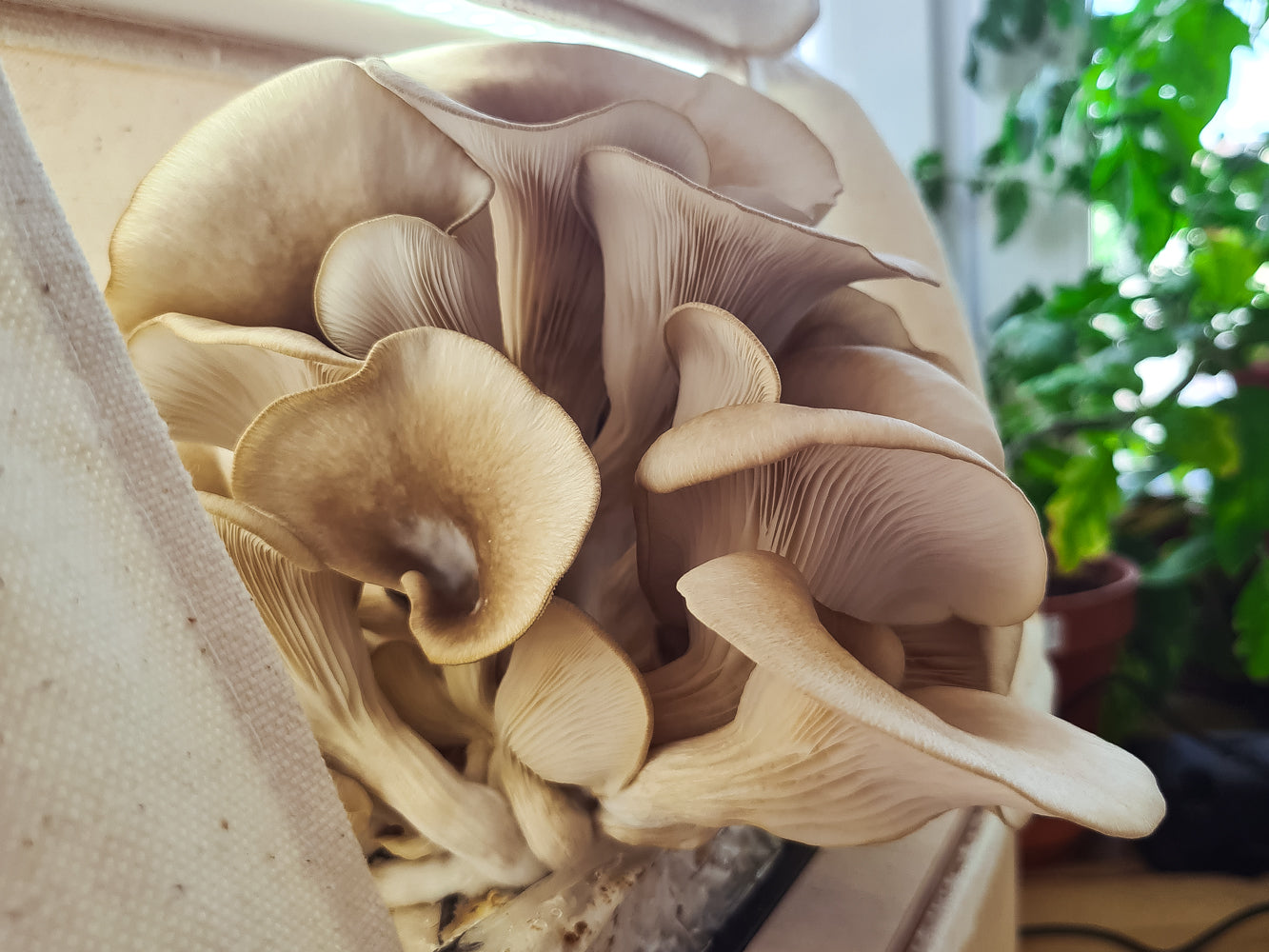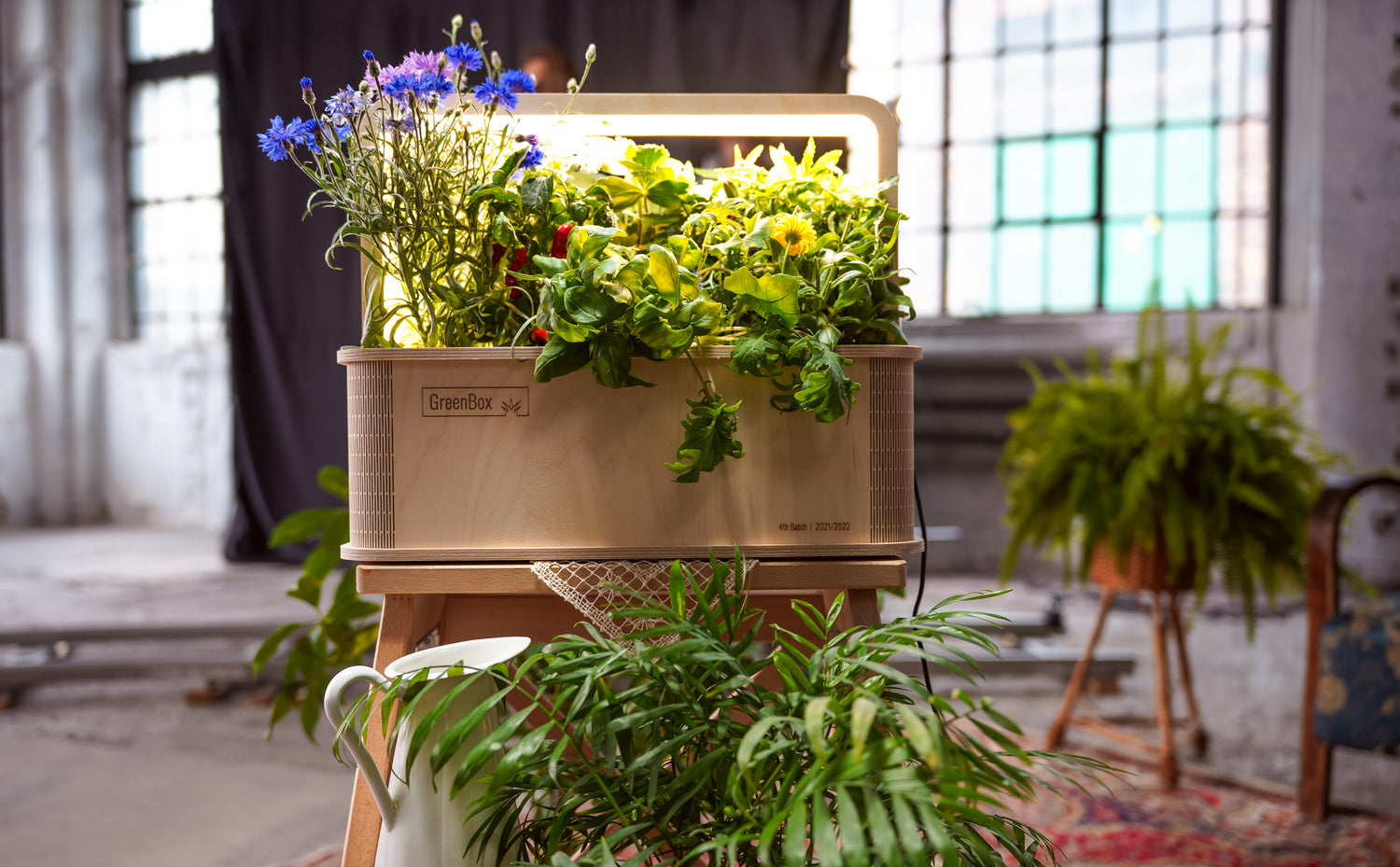
Grow seedlings faster than your shadow
The gardening season is just around the corner and we're turning our attention to seedlings. With the GreenBox , you can easily grow seedlings for your windowsill or balcony faster and more efficiently than ever before. The GreenBox is a stylish indoor greenhouse made of birch wood, which is equipped with automatic lighting, a water tank and sensor and can be controlled via an app. This allows your seedlings to grow under optimal conditions.
I. Why plant now? The ice saints.
May is the ideal time to plant out seedlings, especially after the Ice Saints (May 11 to 15). This period traditionally marks the end of the risk of frost in Central Europe and gives the young plants the best start in the open ground.
II. Optimal use of the GreenBox:
The GreenBox offers numerous technical features that make cultivation easier. The automatic lighting can be set to different light cycles to optimize growth. The water tank with integrated water level sensor ensures even watering and easy control. Both can be controlled and monitored via the app, including information on selected plants.

III. Sustainability and environmental benefits:
The GreenBox enables sustainable plant cultivation by using resources efficiently. The controlled environment minimizes water consumption and the plants are less susceptible to diseases and pests, which reduces the use of pesticides. You can also use our compostable PlantPlugs and integrate the GreenBox into your sustainable garden concept.
IV. How can I now improve my seedling cultivation
- Seed quality: Use high-quality seeds to ensure a high germination rate and healthy plants. Take a look at our Shop.
- Choose plant species that are well suited for growing in the GreenBox, such as tomatoes, peppers & chilies, leafy vegetables and herbs.
- Temperature: Keep the ambient temperature constant (usually between 20 - 25°C) and avoid extreme fluctuations. The GreenBox tent is ideal for this.
- Cultivation medium: Use special cultivation soil or our PlantPlugs that are nutrient-rich, have the right pH value, are well aerated and have a good water-holding capacity.
- Light: Use the GreenBox LED grow lights to provide plants with the ideal amount of light, especially in the darker months or in homes that do not have a south-facing window, for example. With the GreenBox , seedlings can be produced at any time and completely independently of the external conditions. Simply select "100% growth" under the light settings in the app and get off to a flying start.
- Watering: Water regularly. With the GreenBox's 2-liter water tank, this is necessary every 2 weeks on average.
- Fertilize the seedlings regularly with our high-quality GreenBox Booster, a liquid mineral fertilizer that can simply be added to the irrigation water. This promotes vigorous growth.
- Hardening: Before you plant the seedlings outdoors, slowly acclimatize them to the outside temperatures by placing them outside during the day and bringing them back in at night. We also have another blog post about this.
V. Plant tips for the latecomers among you:
Mid-May is the sowing time for cauliflower, Brussels sprouts, cucumbers, zucchinis, pumpkin, melon, bush and runner beans, corn, peas, leeks and many herbs such as basil, marjoram, dill, coriander, cress, nasturtium, chervil, parsley and mugwort.
All perennial species such as thyme, sage, mountain savory, lemon balm and tarragon can be planted out, as well as classics such as tomatoes, peppers and chillies. If you don't want to buy these plants in pots, you can grow them relatively quickly in the GreenBox.
Some plant species have special requirements and need special handling when it comes to growing and planting out the seedlings. Here are some examples and the specific requirements of these plants:
Tomaten (Solanum lycopersicum):
- Planting deep: Tomato seedlings should be planted deep so that additional roots can grow along the stem. This ensures a stronger and more stable plant.
- Support: Tomato plants need supports such as cages or poles to support their weight as they grow and bear fruit.
- Warm and sunny: Tomatoes need plenty of sun and warmth, so they should only be planted outdoors after the last frost.

Paprika (Capsicum spp.):
- Warm soil: Sweet bell pepper seedlings should be planted in warm soil as they are sensitive to cold. A soil temperature of at least 21°C is ideal.
- Slow adaptation: Pepper seedlings must be slowly acclimatized to outdoor conditions to avoid shock.
- Protection from wind: Pepper plants should be protected from strong winds as they can be easily damaged.
Pumpkin and zucchini (Cucurbita spp.):
- Large spacing: These plants need a lot of space to spread out. Seedlings should be planted at least 90 cm apart.
- Planting directly into the soil: Pumpkin and zucchini seedlings should be planted directly into the garden soil as they are sensitive to transplanting. Planting out with our PlantPlugs is therefore ideal.
- Heat-loving: These plants prefer warm temperatures and should be planted outdoors after the last frost.

- Sensitive to transplanting: Cucumber seedlings are sensitive and should be planted with a soil ball to avoid root damage. Planting out with our PlantPlugs is therefore ideal.
- Rankhilfen: Cucumbers need climbing aids such as trellises to spread vertically and protect the fruit from contact with the ground.
- Requiring warmth: Cucumbers prefer warm temperatures and should be planted outdoors after the last frost.
Herbs such as basil (Ocimum basilicum):
- Sensitive to cold: Basil is very sensitive to cold and should only be planted outdoors after the last frost.
- Regular pruning: To encourage bushy growth, the tips of the plants should be pruned regularly.
- Well-drained soil: Basil prefers well-drained soil that is rich in organic matter.

Flowers such as petunias and begonias:
- Light requirements: These flowers need plenty of light to grow vigorously. They should be planted in a sunny location.
- Moisture: The seedlings must be kept evenly moist, but waterlogging should be avoided.
- Protection from cold: These flowers are sensitive to cold and should only be planted outdoors after the last frost.
VI Practical tips for planting out seedlings in the garden:
Successfully planting out seedlings is crucial for a healthy and productive garden.
Prepare the soil and planting holes: Loosen the soil well and work in organic compost to improve the soil structure and nutrient supply. Dig planting holes that are about twice the size of the seedling root ball and plant the plants so that the root ball is lightly covered. Water the seedlings well to remove air bubbles and ensure good soil contact.
Care after planting out: Mulch the soil surface around the plants with materials such as straw or bark mulch. This helps to retain moisture in the soil, reduce weed growth and protect the roots from temperature fluctuations. Keep the soil evenly moist, especially in the first few weeks after planting, and fertilize the plants regularly with a balanced fertilizer to promote growth.
Protect against pests and diseases: Use physical barriers such as snail fencing or fleece to keep pests out, and use beneficial insects such as ladybugs for biological pest control. Check plants regularly for signs of disease or pest infestation and act immediately to prevent major damage.

VII Practical tips for transplanting seedlings into pots
Successfully transplanting seedlings into pots requires some specific steps to ensure that the plants thrive. Here are some tried and tested tips:
Pot and soil preparation: Choose pots of sufficient size with good drainage holes to avoid waterlogging. Fill the pots with high-quality, well-aerated potting soil that is rich in nutrients and provides good water retention. Prepare the soil by moistening it slightly.
Pflanzen einsetzen: Place the seedlings in the pots by digging planting holes that are about twice the size of the root ball of the seedlings. Make sure that the root ball is lightly covered. Water the seedlings well after planting to remove air bubbles and ensure soil contact.
Care after planting: Keep the soil evenly moist, but avoid waterlogging. Use mulch on the surface of the soil to retain moisture and reduce weed growth. Fertilize the plants regularly with a balanced liquid fertilizer that is especially suitable for potted plants.
Protect against pests and diseases: Place the pots in a bright location, but avoid direct sunlight, which could stress the plants. Check the plants regularly for signs of pests and diseases and act immediately to prevent major damage. Use biological pest control methods such as beneficial insects or natural insecticides.

VIII. For the rascals among you 😈:
You can now legally grow C@*nabis seedlings for your garden or balcony. C@*nabis thrives particularly well when the seedlings are grown in a controlled environment such as the GreenBox. This provides ideal light conditions and an optimum water supply and, with a little help, an optimum nutrient supply, which forms the basis for strong and healthy plants. As soon as the seedlings are strong enough and the risk of frost after the Ice Saints has passed, you can plant them outdoors. So from now on. If you're wondering whether it's too late to grow C@*nabis seedlings for your garden or balcony, don't worry, we can help you out!
With the GreenBox and our selection of autoflowering strains, that's no problem! The autoflowering varieties have a life cycle of approx. 10 - 12 weeks from sowing to harvest. The life cycle is also independent of day length, although this also influences the harvest quantity.
You can positively influence germination if you pay attention to the following:
- Use our already proven seeds.
- Make sure the hole depth in the PlantPlug is approx. 1.5 cm.
- Place the seed with the tip pointing downwards. This promotes rooting.
- Keep the temperature between 20 - 25 °C (the GreenBox tent can help with this).
With the GreenBox, your C@*nabis seedlings will reach a good size for planting out after approx. 2 weeks. The plants can then be transplanted together with the PlantPlug, whether in a suitable large pot (between 10 - 15 liters) or directly into the soil. The planting hole should always be about twice the size of the container in which the seedling was grown.
The GreenBox is the ideal solution for anyone who wants to grow healthy and strong seedlings without much effort. Whether for the windowsill or the balcony, the GreenBox guarantees a successful start to the gardening season. Even for latecomers ;)






